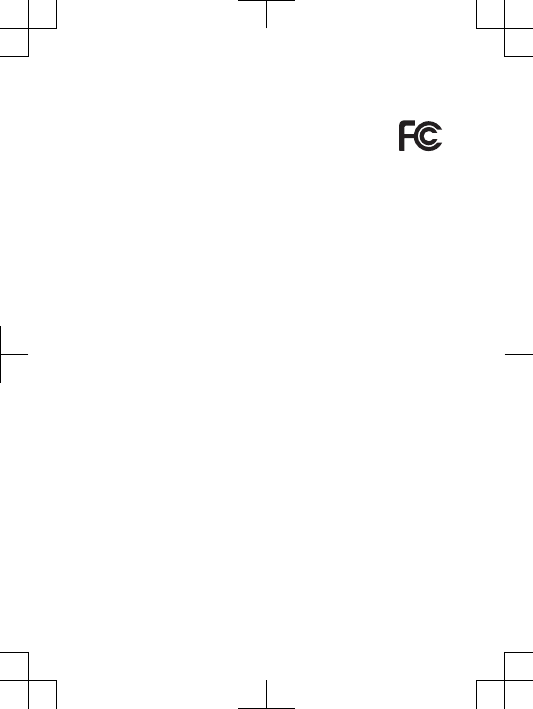Sony PM0901 GSM/WCDMA/LTE Phone + Bluetooth, DTS/UNII a/b/g/n/ac, ANT+, NFC & GPS User Manual Sony Ericsson Mobile Communications AB
Sony Mobile Communications Inc GSM/WCDMA/LTE Phone + Bluetooth, DTS/UNII a/b/g/n/ac, ANT+, NFC & GPS Sony Ericsson Mobile Communications AB
Sony >
Contents
- 1. HAC Leaflet
- 2. SAR Leaflet
- 3. Users Manual
SAR Leaflet

Important Information
United States & Canada
THIS PHONE MODEL HAS BEEN CERTIFIED IN COMPLIANCE
WITH THE GOVERNMENT’S REQUIREMENTS FOR EXPOSURE
TO RADIO WAVES.
The E6603 Series mobile phones have been designed to
comply with applicable safety requirements for exposure to
radio waves. Your wireless phone is a radio transmitter and
receiver. It is designed to not exceed the limits of exposure to
radio frequency (RF) energy set by governmental authorities.
These limits establish permitted levels of RF energy for the
general population. The guidelines are based on standards
that were developed by international scientific organizations
through periodic and thorough evaluation of scientific studies.
The standards include a safety margin designed to assure the
safety of all individuals, regardless of age and health.
The radio wave exposure guidelines employ a unit of
measurement known as the Specific Absorption Rate (SAR).
Tests for SAR are conducted using standardized methods with
the phone transmitting at its highest certified power level in all
used frequency bands. While there may be differences
between the SAR levels of various phone models, they are all
designed to meet the relevant guidelines for exposure to radio
waves.
The highest SAR value as reported to the authorities for this
phone model when tested for use by the ear is 0.55 W/kg,
and when worn on the body is 0.59 W/kg. For body-worn
operation, the phone has been tested when positioned a
minimum of 15 mm from the body without any metal parts in
the vicinity of the phone or when properly used with an
appropriate accessory and worn on the body. For devices
which include “WiFi hotspot” functionality, SAR measurements
for the device operating in WiFi hotspot mode were taken
using a separation distance of 10 mm. Use of third-party
2

accessories may result in different SAR levels than those
reported.
Before a phone model is available for sale to the public in
the US, it must be tested and certified by the Federal
Communications Commission (FCC) that it does not exceed
the limit established by the government-adopted requirement
for safe exposure. The tests are performed in positions and
locations (i.e., by the ear and worn on the body) as required by
the FCC for each model. The FCC has granted an Equipment
Authorization for this phone model with all reported SAR levels
evaluated as in compliance with the FCC RF exposure
guidelines. While there may be differences between the SAR
levels of various phones, all mobile phones granted an FCC
equipment authorization meet the government requirement for
safe exposure. SAR information on this phone model is on file
at the FCC and can be found under the Display Grant section
of http://transition.fcc.gov/oet/ea/fccid after searching on FCC
ID PY7-PM0901. Additional information on SAR can be found
on the Mobile Manufacturers Forum EMF website at
http://www.emfexplained.info/.
In the United States and Canada, the SAR limit for mobile
phones used by the public is 1.6 watts/kilogram (W/kg)
averaged over one gram of tissue. The standard incorporates a
margin of safety to give additional protection for the public and
to account for any variations in measurements.
3

FCC Statement
This device complies with Part 15 of the FCC rules.
Operation is subject to the following two conditions:
(1) This device may not cause harmful interference,
and (2) This device must accept any interference received,
including interference that may cause undesired operation.
Any change or modification not expressly approved by Sony
may void the user's authority to operate the equipment.
This equipment has been tested and found to comply with
the limits for a Class B digital device, pursuant to Part 15 of
the FCC Rules. These limits are designed to provide
reasonable protection against harmful interference in a
residential installation. This equipment generates, uses and
can radiate radio frequency energy and, if not installed and
used in accordance with the instructions, may cause harmful
interference to radio communications. However, there is no
guarantee that interference will not occur in a particular
installation.
If this equipment does cause harmful interference to radio or
television reception, which can be determined by turning the
equipment off and on, the user is encouraged to try to correct
the interference by one or more of the following measures:
•Reorient or relocate the receiving antenna.
•Increase the separation between the equipment and
receiver.
•Connect the equipment into an outlet on a circuit different
from that to which the receiver is connected.
•Consult the dealer or an experienced radio/TV technician for
help.
17

Industry Canada Statement
This device complies with RSS-210 of Industry Canada.
Operation is subject to the following two conditions: (1) this
device may not cause interference, and (2) this device must
accept any interference, including interference that may cause
undesired operation of the device.
This Class B digital apparatus complies with Canadian
ICES-003.
The device for operation in the band 5150-5250 MHz is only
for indoor use to reduce the potential for harmful interference
to co-channel mobile satellite systems. The maximum antenna
gain permitted for devices in the bands 5250-5350 MHz and
5470-5725 MHz shall comply with the e.i.r.p. limit; and the
maximum antenna gain permitted for devices in the band
5725-5825 MHz shall comply with the e.i.r.p. limits specified
for point-to-point and non point-to-point operation as
appropriate. Users should also be advised that high-power
radars are allocated as primary users (i.e. priority users) of the
bands 5250-5350 MHz and 5650-5850 MHz and that these radars
could cause interference and/or damage to LE-LAN devices.
Avis d’industrie Canada
Cet appareil numérique de la classe B est conforme à la norme
NMB-003 du Canada.
Les dispositifs fonctionnant dans la bande 5150-5250 MHz
sont réservés uniquement pour une utilisation à l’intérieur afin de
réduire les risques de brouillage préjudiciable aux systèmes de
satellites mobiles utilisant les mêmes canaux. Le gain maximal
d’antenne permis pour les dispositifs utilisant les bandes
5250-5350 MHz et 5470-5725 MHz doit se conformer à la limite
de p.i.r.e. Le gain maximal d’antenne permis (pour les dispositifs
utilisant la bande 5725-5825 MHz) doit se conformer à la limite
de p.i.r.e. spécifiée pour l’exploitation point à point et non point
à point, selon le cas. De plus, les utilisateurs devraient aussi être
avisés que les utilisateurs de radars de haute puissance sont
désignés utilisateurs principaux (c.-à-d., qu’ils ont la priorité)
pour les bandes 5 250-5 350 MHz et 5 650-5 850 MHz et que ces
radars pourraient causer du brouillage et/ou des dommages aux
dispositifs LAN-EL.